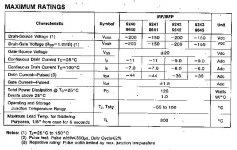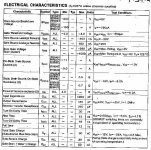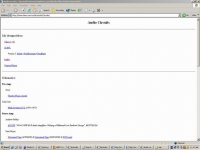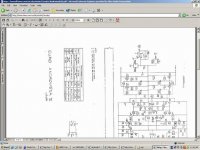I have a blown channel on a Sumo Andromeda III
It uses IRFP240/IRFP9243 combo. The 9243's are no longer available and IR recommends the IRFP9240 as a replacement.
I cant find any data sheets on the 9243 to compare. This is a fully balanced amplifier in which the output gnds. are not grounded to chassis. I have seperate bias & null adjustments for each side of balanced amplifier for one channel. I dont trust the settings on the good channel and looking for recomendations on bias. I believe the null is set 0 to ground on each side and not between + & - since this is fully balanced.
It uses IRFP240/IRFP9243 combo. The 9243's are no longer available and IR recommends the IRFP9240 as a replacement.
I cant find any data sheets on the 9243 to compare. This is a fully balanced amplifier in which the output gnds. are not grounded to chassis. I have seperate bias & null adjustments for each side of balanced amplifier for one channel. I dont trust the settings on the good channel and looking for recomendations on bias. I believe the null is set 0 to ground on each side and not between + & - since this is fully balanced.
this is distortion null not dc null, dc is nullified by servo
http://www.datasheetarchive.com/semiconductors/pdfdatasheet.php?Datasheet=1003197
http://www.datasheetarchive.com/semiconductors/pdfdatasheet.php?Datasheet=1003197
Attachments
Schematic
Thanks for the datasheets
Whats the chance of a schematic or bias/null settings for this amp?
Thanks for the datasheets
Whats the chance of a schematic or bias/null settings for this amp?
johnsciolino said:This is a fully balanced amplifier in which the output gnds. are not grounded to chassis. I have seperate bias & null adjustments for each side of balanced amplifier for one channel. I dont trust the settings on the good channel and looking for recomendations on bias. I believe the null is set 0 to ground on each side and not between + & - since this is fully balanced.
Several Sumo amps were designed by James Buongiorno. You could trying asking him about the settings:
jamesbongiorno@ampzilla2000.com
In any case his balanced amps were in fact bridged amps, so I don't know if it's accurate to call them balanced amps.
And I think null & bias was carried out separately on each side of the bridge.
There should be some information on the web, but I failed to find it just now.
Carlos
The URL seems to be outdated, as it doesn't get us where it should.
Seems to be happening a lot with most of my circuit listing places.
Carlos
Seems to be happening a lot with most of my circuit listing places.
Carlos
Carlos, please open
http://home.kimo.com.tw/skychutw/Circuits/
then click on Andromeda II, it is here
http://home.kimo.com.tw/skychutw/Circuits/
then click on Andromeda II, it is here
dimitri said:Carlos, please open
http://home.kimo.com.tw/skychutw/Circuits/
then click on Andromeda II, it is here
Did you try it?
If you click on any of the blue names it gets you here:
http://tw.home.yahoo.com/member/h/noreferrer.html
Attachments
dimitri said:
I am sorry I misexplained.
That URL is fine, but the circuits listed there get you where I said.
Try it and see.
dimitri said:
OK, I believe you.
Believe me when I tell that I still can't get into those pages.
Is someone else having the same lock-up that I get?
What should be changed to open that lock?
Carlos
OK. I could see what was happening.
My firewall (Zone Alarm) was not letting some pdf files from passing on.
I wonder how to set things up for that not to happen.
And now getting back to audio matters.
Apparently the A and B outputs have separate circuits that have to be nulled and biased separately.
Do write to Buongiorno and see if you can get some help for the setup. There should be a proper method and an easy method.
Carlos
My firewall (Zone Alarm) was not letting some pdf files from passing on.
I wonder how to set things up for that not to happen.
And now getting back to audio matters.
Apparently the A and B outputs have separate circuits that have to be nulled and biased separately.
Do write to Buongiorno and see if you can get some help for the setup. There should be a proper method and an easy method.
Carlos
Bias
Thanks,
The links were fine
All I have to do is figure out the null and bias setting
It appears the version II is very close to the version III.
Same servos,similar output topology.
It looks like a bridged amp and not a "balanced" amp.
Thanks,
The links were fine
All I have to do is figure out the null and bias setting
It appears the version II is very close to the version III.
Same servos,similar output topology.
It looks like a bridged amp and not a "balanced" amp.
Hawksford again?
What is the design date of this amplifier? To my surprise it looks like the Andromeda uses the Hawksford error correction circuit in the output stage. Quite some posts in this forum are about this circuit. Details can be found in Hawksford's paper, see fig 5. http://www.essex.ac.uk/ese/research/audio_lab/malcolmspubdocs/J3 Distortion correction PA.pdf
Hawksford's paper is from 1981. Was Bongiorno's design based on Hawksford's?
Anyway, since this is an error correction output stage, the null-setting is not for offset adjustment but for minimization of the output stage distortion. It also adjusts the damping factor to infinity because at the right setting the output impedance becomes zero. This is also the way to adjust it. Connect a load resistor to the output, intermittently. Watch the output level on a scope and adjust for no changes between the loaded and the unloaded situation.
The bias adjustment and the null adjustment are reasonably orthogonal, i.e. do not influence each other much. But better check repeatedly after making changes in one of the settings.
Output offset should be near zero; both outputs have a servo.
Steven
What is the design date of this amplifier? To my surprise it looks like the Andromeda uses the Hawksford error correction circuit in the output stage. Quite some posts in this forum are about this circuit. Details can be found in Hawksford's paper, see fig 5. http://www.essex.ac.uk/ese/research/audio_lab/malcolmspubdocs/J3 Distortion correction PA.pdf
Hawksford's paper is from 1981. Was Bongiorno's design based on Hawksford's?
Anyway, since this is an error correction output stage, the null-setting is not for offset adjustment but for minimization of the output stage distortion. It also adjusts the damping factor to infinity because at the right setting the output impedance becomes zero. This is also the way to adjust it. Connect a load resistor to the output, intermittently. Watch the output level on a scope and adjust for no changes between the loaded and the unloaded situation.
The bias adjustment and the null adjustment are reasonably orthogonal, i.e. do not influence each other much. But better check repeatedly after making changes in one of the settings.
Output offset should be near zero; both outputs have a servo.
Steven
OK, I believe you.
Believe me when I tell that I still can't get into those pages.
Is someone else having the same lock-up that I get?
What should be changed to open that lock?
Carlos
meu email
cfreund51@hotmail.com
- Status
- Not open for further replies.
- Home
- Amplifiers
- Solid State
- Sumo Andromeda III Settings





